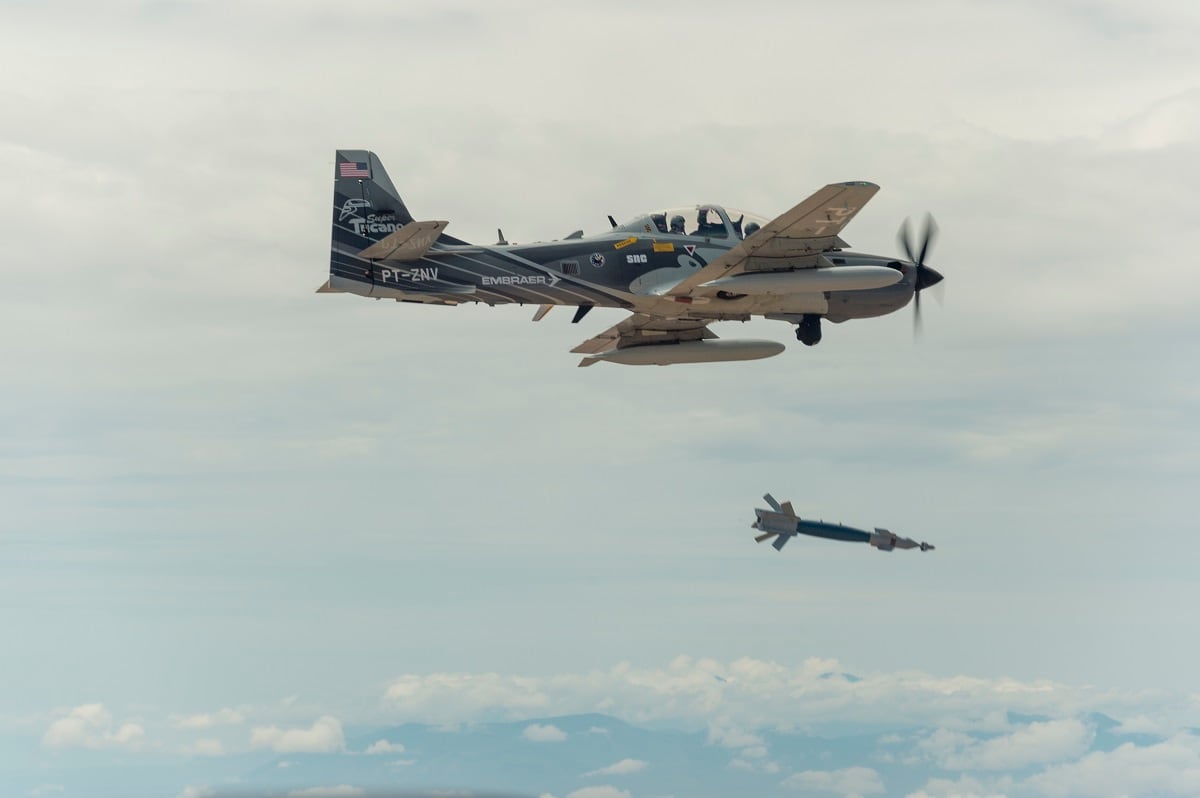A mysterious malfunction led to a dramatic loss of thrust that caused an A-29B Super Tucano to crash near Homerville, Georgia, last March, according to an accident investigation board report released Wednesday.
But the Air Education and Training Command accident investigation board that studied the crash said the cause of the malfunction could not be determined.
The American instructor pilot and Afghan student pilot, who were assigned to the 81st Fighter Squadron at Moody Air Force Base in Georgia, ejected in the March 6, 2017, incident, sustaining minor injuries. The plane was destroyed on impact, costing the government $17.7 million, according to the Dec. 29 report, signed by accident investigation board president Col. Michael Snell.
The engine retained some thrust after the propulsion system malfunction, the report said, but wasn’t able to sustain level flight. The report also said that visibility restrictions from the rear cockpit and task oversaturation contributed to the crash.
The report said that the A-29 that crashed was the second in a two-ship formation, during a close air attack student flight. Shortly after the sortie began, the A-29 had a fault in its power management system. But after consulting with leadership, the flight proceeded.
About an hour later, the propulsion system suddenly malfunctioned, the report said, which caused a significant loss of propeller speed. The instructor pilot started the compressor stall checklist procedure, but stopped after he got control of the aircraft and found that the engine was not stalled.
The instructor pilot started trying to troubleshoot what had gone wrong with the propulsion system and get the plane operating normally again, but soon decided to divert the plane to the nearest field, at the Homerville Airport, to land.
RELATED

The instructor pilot, who had cycled the power management system to manual, tried to guide the plane in, but ordered the student pilot to eject with him about 300 feet above the ground.
The plane crashed about 1.5 nautical miles northwest of the airport at about 2:32 p.m. local time, 5 minutes and 26 seconds after the propulsion system malfunctioned.
The pilots parachuted into trees about 420 feet away from the crash. The instructor pilot ― who sustained a compression fracture of his spine during the ejection ― dropped about four feet after releasing his harness. He then helped the student pilot, who was stuck 20 feet off the ground. The student pilot sustained minor injuries. Both were taken to a local hospital, treated and released.
Investigators recreated the flight in seven simulations under different scenarios, the report said, but was only able to reach the airport once ― by immediately turning hard to the right, on a straight line toward Homerville, as soon as the malfunction occurred. Every other simulation ended in a crash.

During the actual flight, the instructor pilot turned north-northeast for 90 seconds while he tried to visually acquire Homerville, before then turning southeast to line up with the Homerville runway.
The report said that the instructor pilot had a limited view from the back seat of the aircraft. Once he took over, his obstructed view made it harder for him to visually acquire Homerville for the emergency landing.
The instructor pilot also had “task oversaturation,” the report said. He had to conduct instrument crosschecks, communicate, and coordinate in a very short amount of time, which overwhelmed his ability to process all that information.
The investigator was unable to determine why the propulsion system malfunctioned, and what caused the propeller speed to decay suddenly. The aircraft was in proper working order and all required maintenance and inspections had been conducted. The investigator said it couldn’t confirm a link between the power management system shortly after the flight began and the propulsion malfunction nearly an hour later.
The investigator also didn’t fault the instructor pilot, who was properly trained, certified and authorized to fly the A-29.
“The mode of failure was without precedent in the A-29B and was inconsistent with any emergency procedure being taught or described,” the report said.
Stephen Losey is the air warfare reporter for Defense News. He previously covered leadership and personnel issues at Air Force Times, and the Pentagon, special operations and air warfare at Military.com. He has traveled to the Middle East to cover U.S. Air Force operations.
